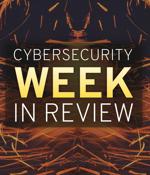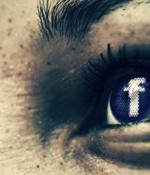Security News

Threat actors exchange beacons for badgers to evade endpoint securityUnidentified cyber threat actors have started using Brute Ratel C4, an adversary simulation tool similar to Cobalt Strike, to try to avoid detection by endpoint security solutions and gain a foothold on target networks, Palo Alto Networks researchers have found. Attackers are using deepfakes to snag remote IT jobsMalicious individuals are using stolen personally identifiable information and voice and video deepfakes to try to land remote IT, programming, database and software-related jobs, the FBI has warned last week.

Malicious individuals are using stolen personally identifiable information and voice and video deepfakes to try to land remote IT, programming, database and software-related jobs, the FBI has warned last week. Deepfakes are synthetic media - images, audio recordings, videos - that make it look like a person has been doing and saying things they haven't done or said.

Qualcomm knows that if it wants developers to build and optimize AI applications across its portfolio of silicon, the Snapdragon giant needs to make the experience simpler and, ideally, better than what its rivals have been cooking up in the software stack department. That's why on Wednesday the fabless chip designer introduced what it's calling the Qualcomm AI Stack, which aims to, among other things, let developers take AI models they've developed for one device type, let's say smartphones, and easily adapt them for another, like PCs. This stack is only for devices powered by Qualcomm's system-on-chips, be they in laptops, cellphones, car entertainment, or something else.

The Federal Bureau of Investigation warns of increasing complaints that cybercriminals are using Americans' stolen Personally Identifiable Information and deepfakes to apply for remote work positions. The public service announcement, published on the FBI's Internet Crime Complaint Center today, adds that the deepfakes used to apply for positions in online interviews include convincingly altered videos or images.

Google has quietly banned deepfake projects on its Colaboratory service, putting an end to the large-scale utilization of the platform's resources for this purpose. Colab is an online computing resource that allows researchers to run Python code directly through the browser while using free computing resources, including GPUs, to power their projects.

Two stunning deepfakes that have been broadly covered include a deepfake of Tom Cruise, birthed into the world by Chris Ume and Miles Fisher, and deepfake young Luke Skywalker, created by Shamook and Graham Hamilton, in a recent episode of "The Book of Boba Fett.". Without a similar bone structure and the subject's trademark movements and turns of phrase, even today's most advanced AI would be hard-pressed to make the deepfake perform credibly.

Facebook has removed a deepfake video of Ukrainian President Volodymyr Zelenskyy spreading across the social network and the Internet, asking Ukrainian troops lay down their arms and surrender. "Earlier today, our teams identified and removed a deepfake video claiming to show President Zelensky issuing a statement he never did," said Nathaniel Gleicher, the head of security policy at Meta, Facebook's parent company.

Ransomware attacks used to be limited to a single attack / single extortion attempt, where hackers would demand payment in exchange for decrypting the target organization's files they've encrypted. In addition to ransomware, supply chain attacks have been very effective lately and are also on the rise, with the current trend seeing most of them targeting software companies, with high profile examples including attacks against SolarWinds and Codecov.

If you want people to trust the photos and videos your business puts out, it might be time to start learning how to prove they haven't been tampered with. Microsoft has a quiz you can take to see if you can spot deepfakes yourself; that's less a training tool and more an attempt to increase awareness and media literacy.

How worried should we be about deepfakes? What sort of threat do they pose to digital ID verification and the biometric technology that we are becoming so reliant on, and are there ways to combat the threat? While video deepfakes are arguably the most common, audio deepfakes are also growing in popularity.